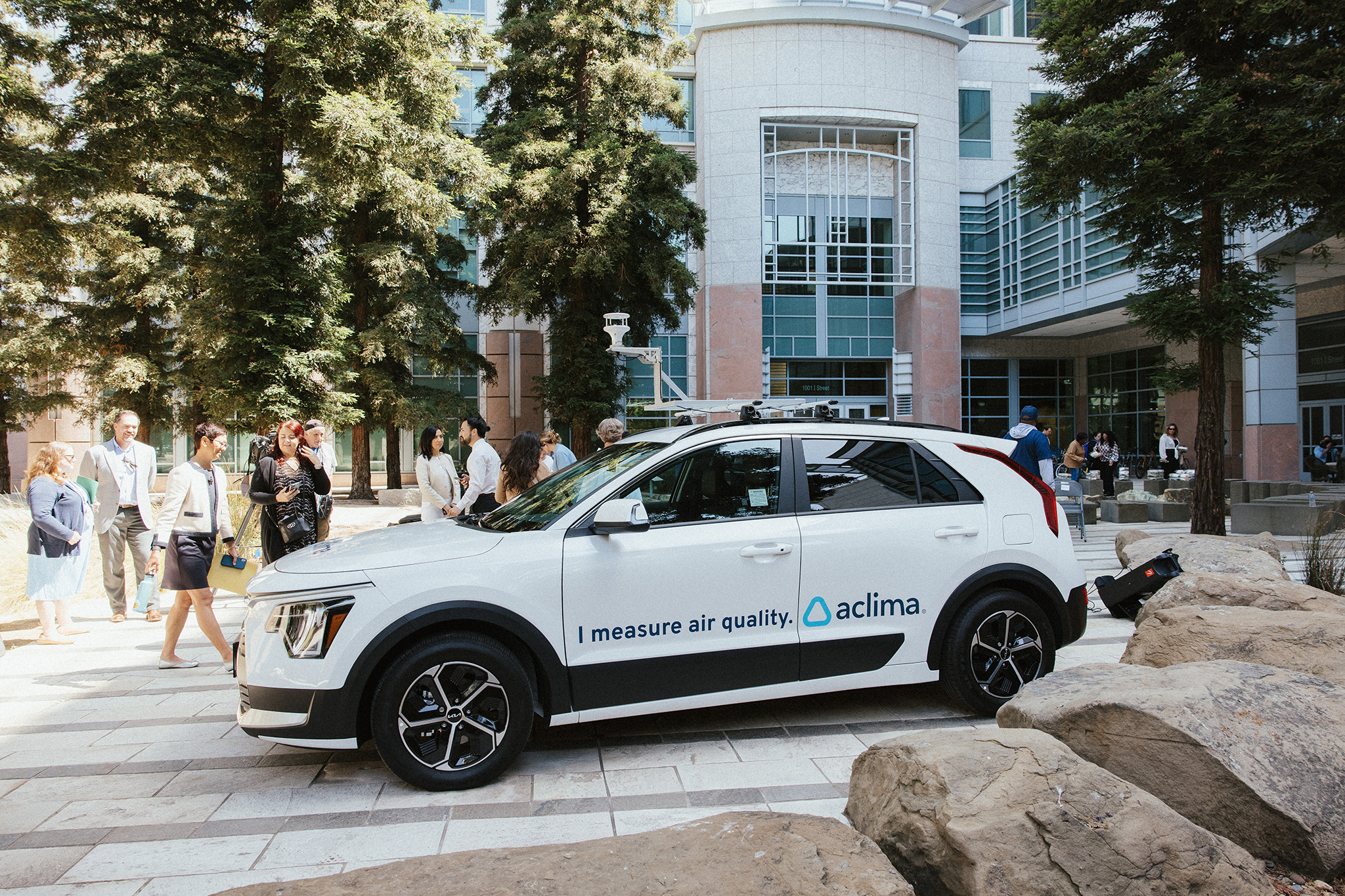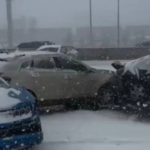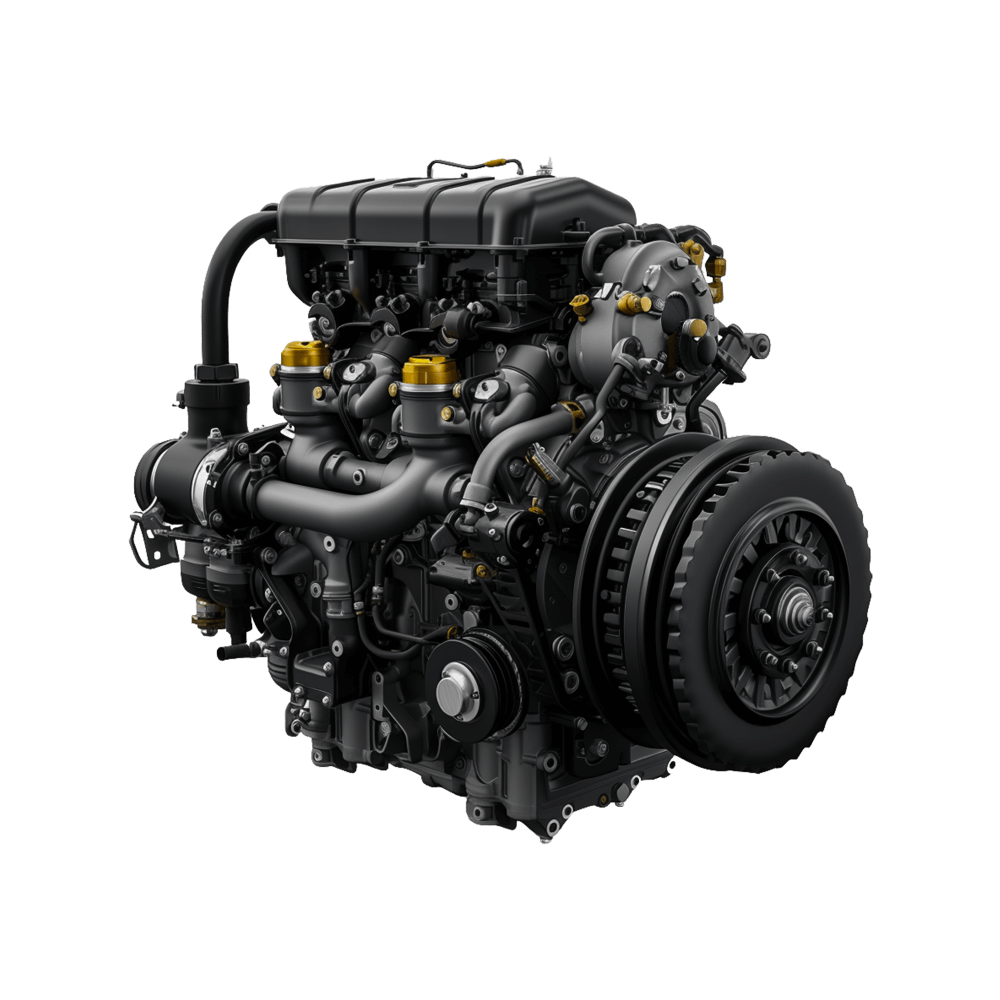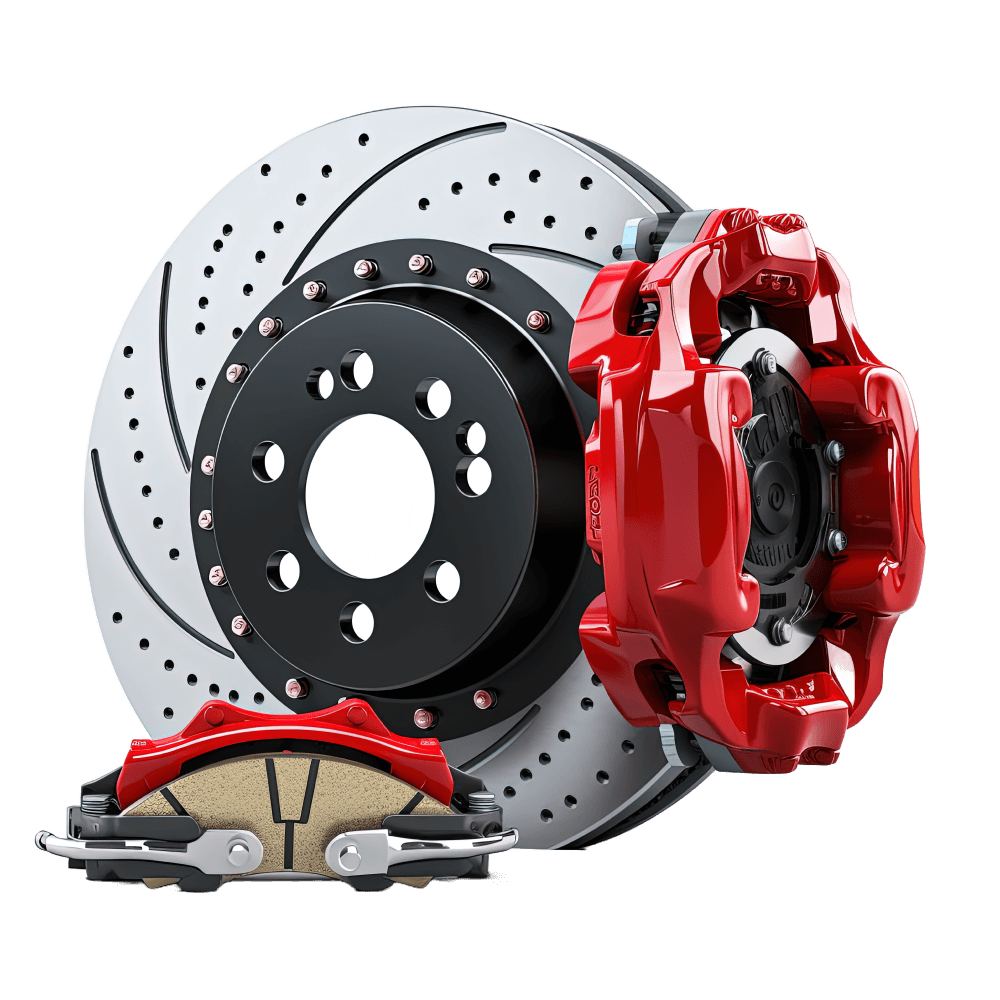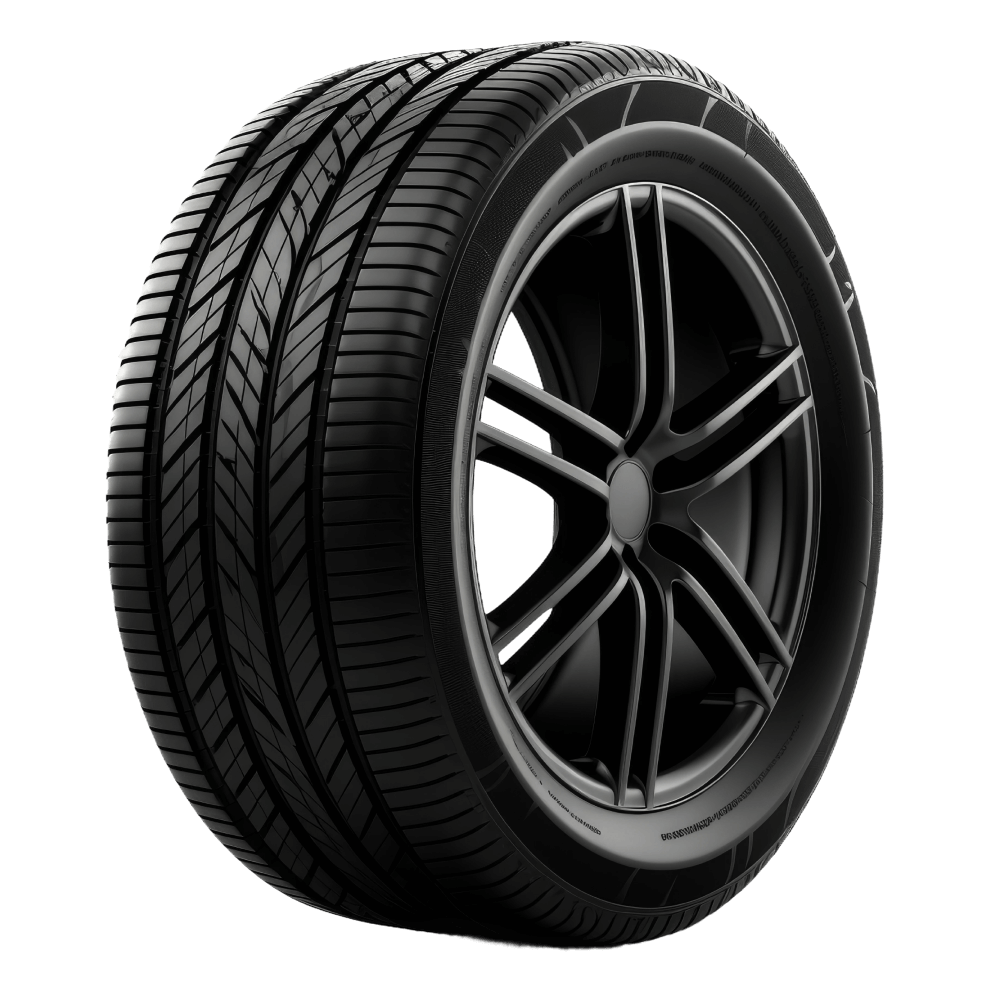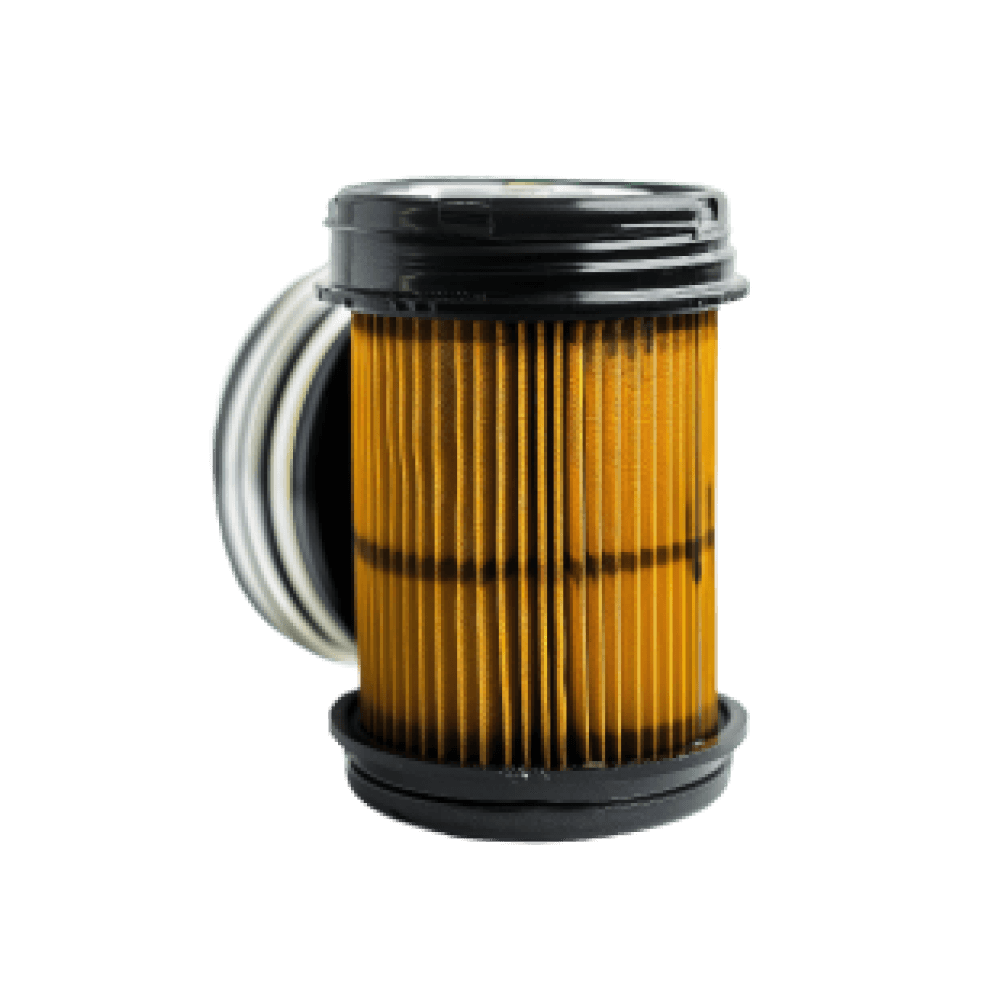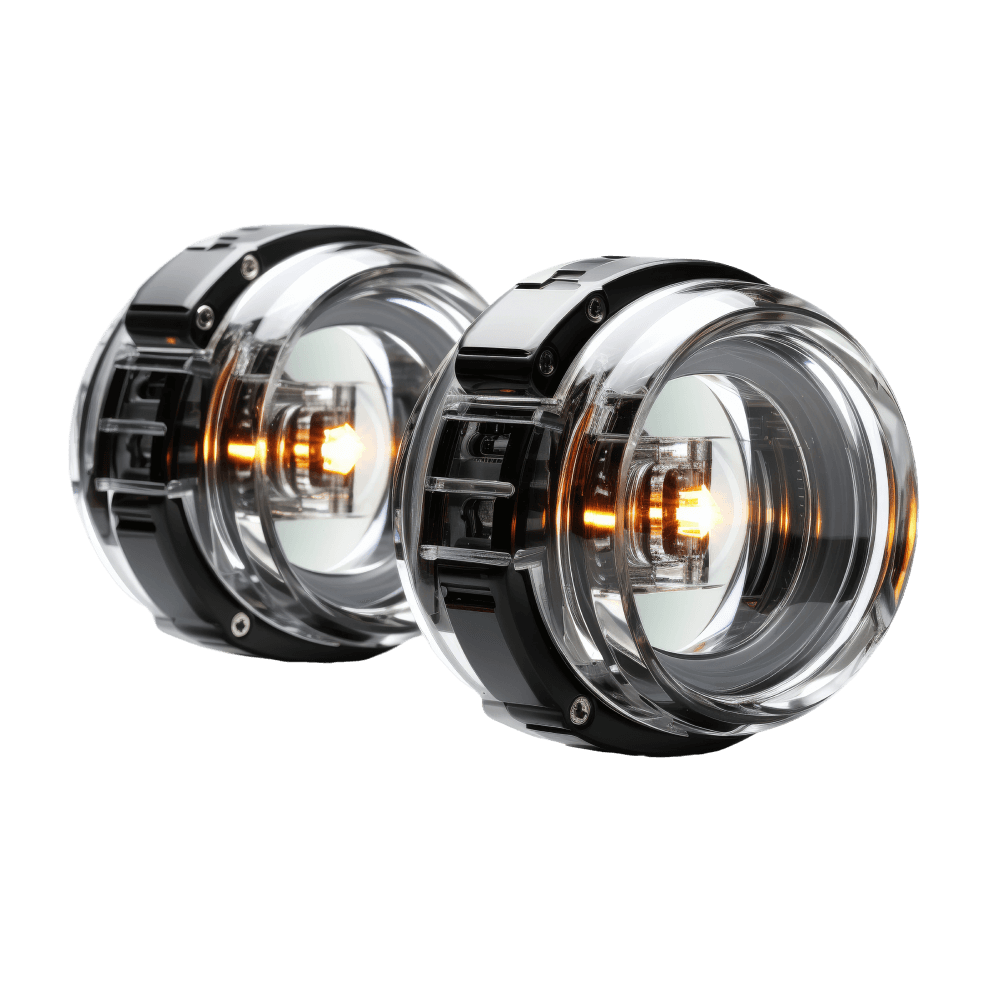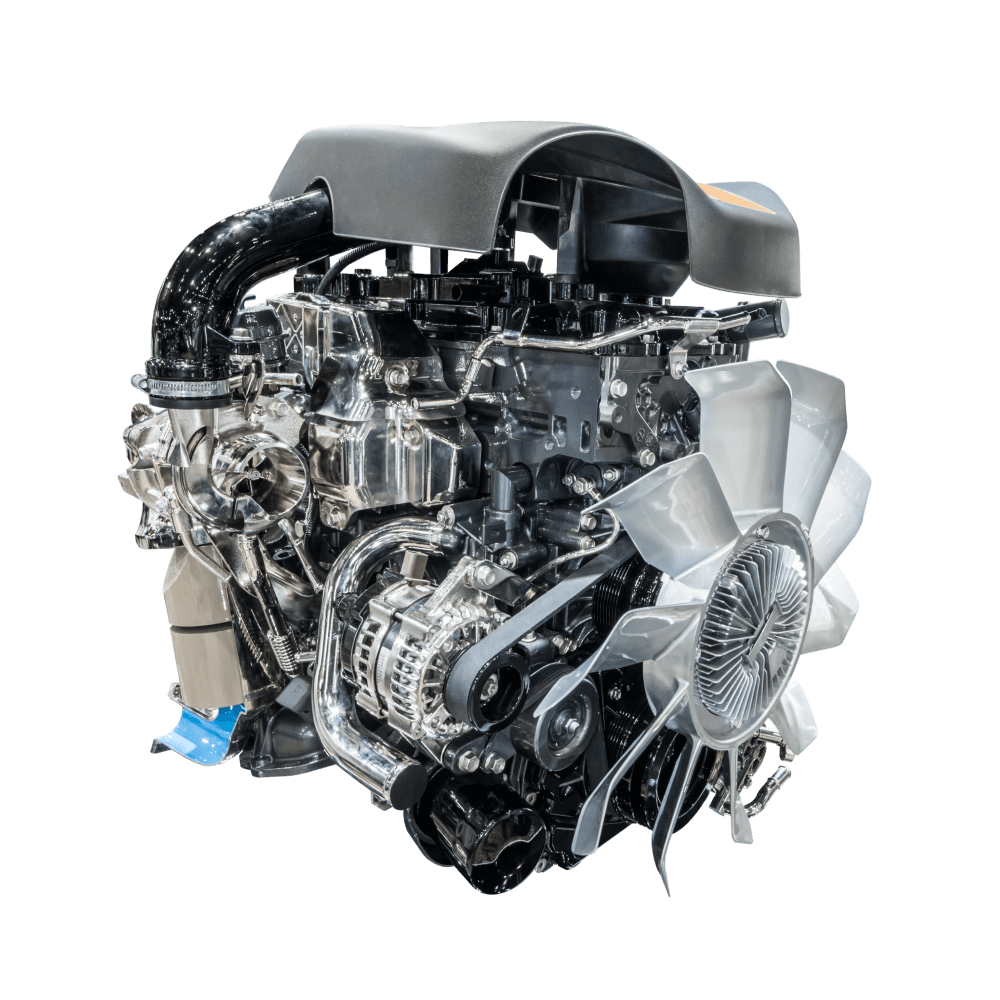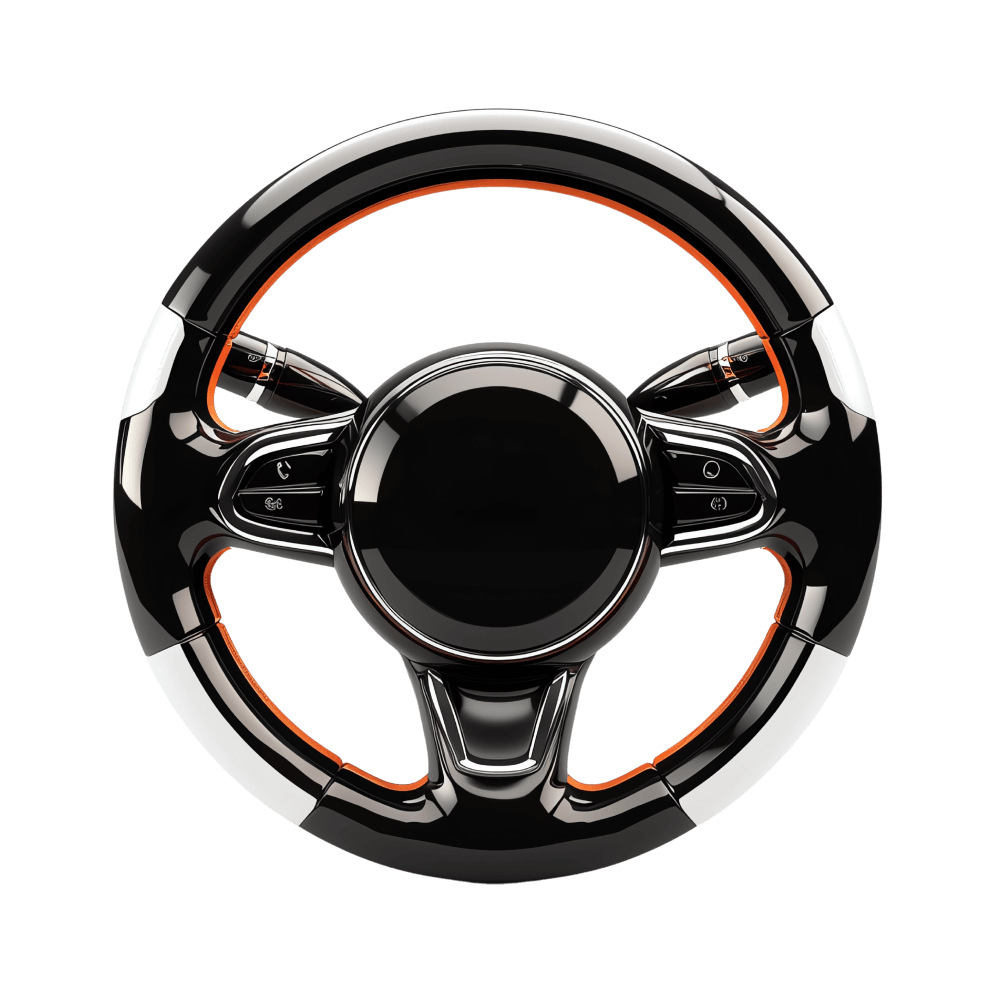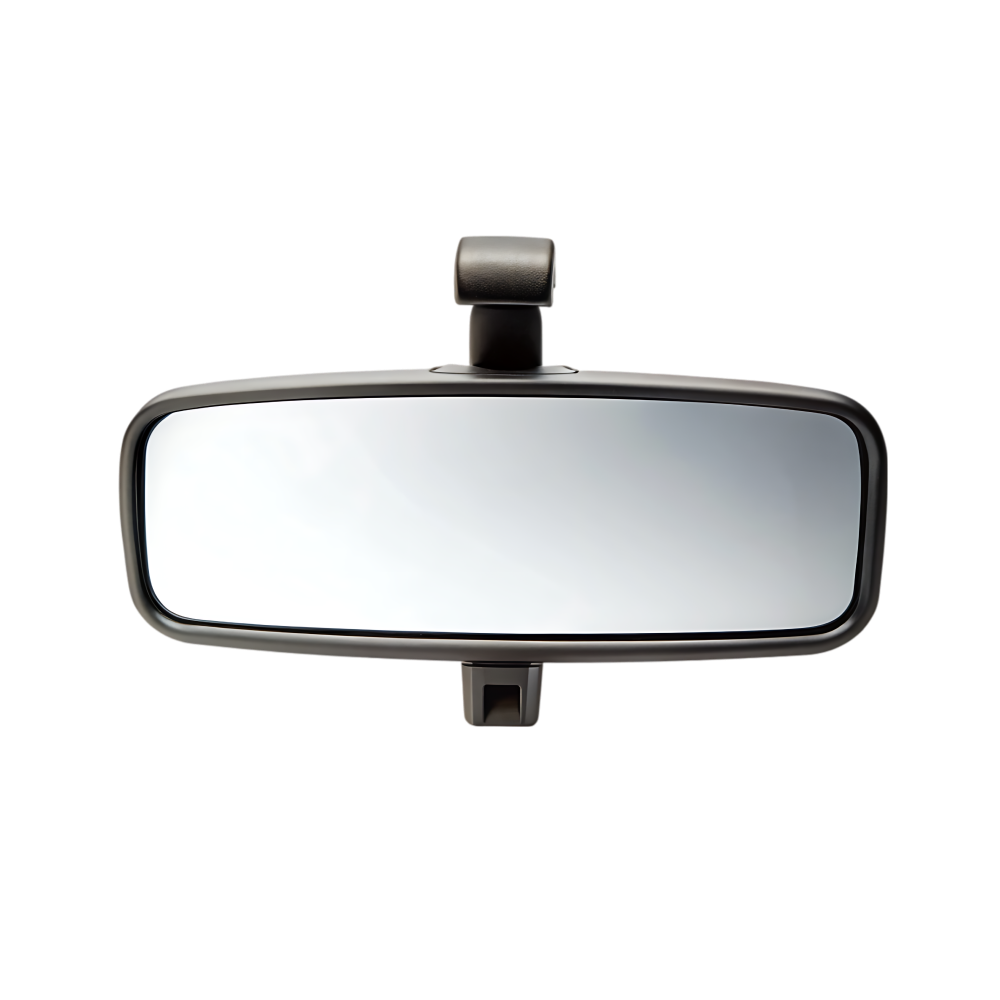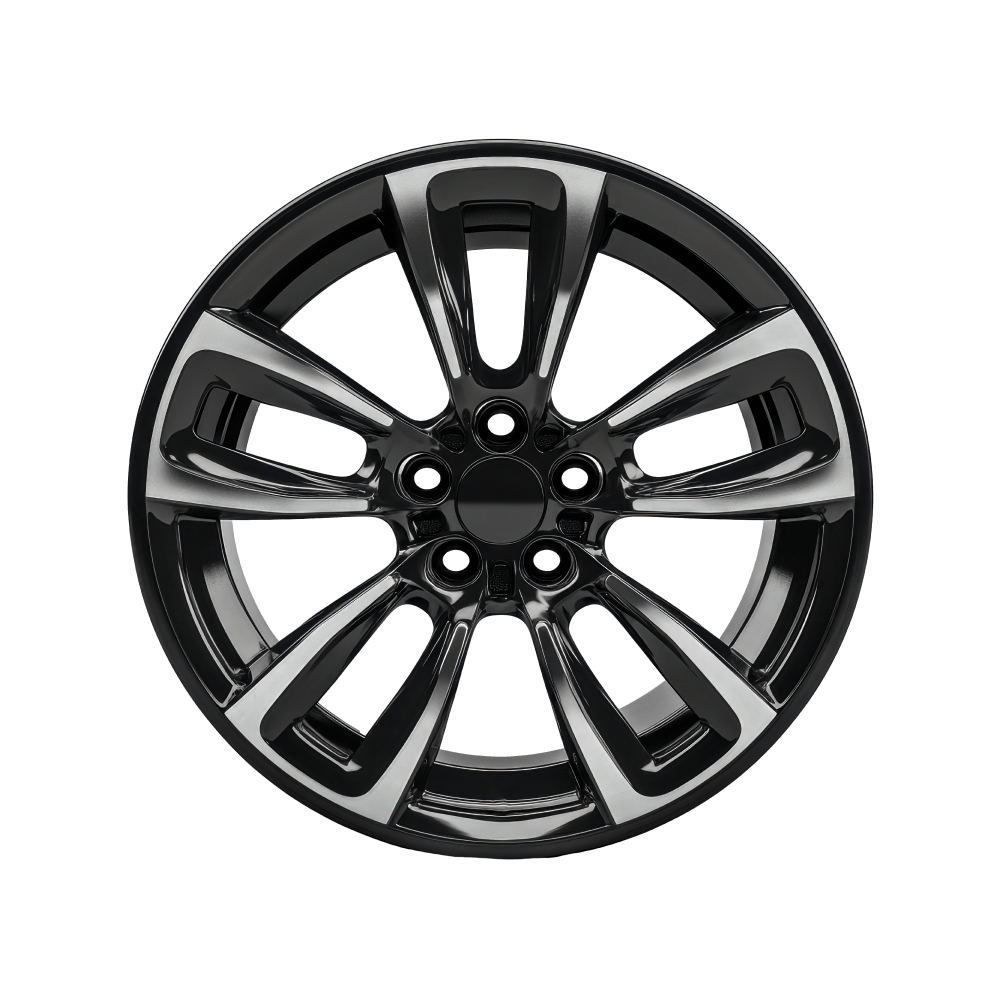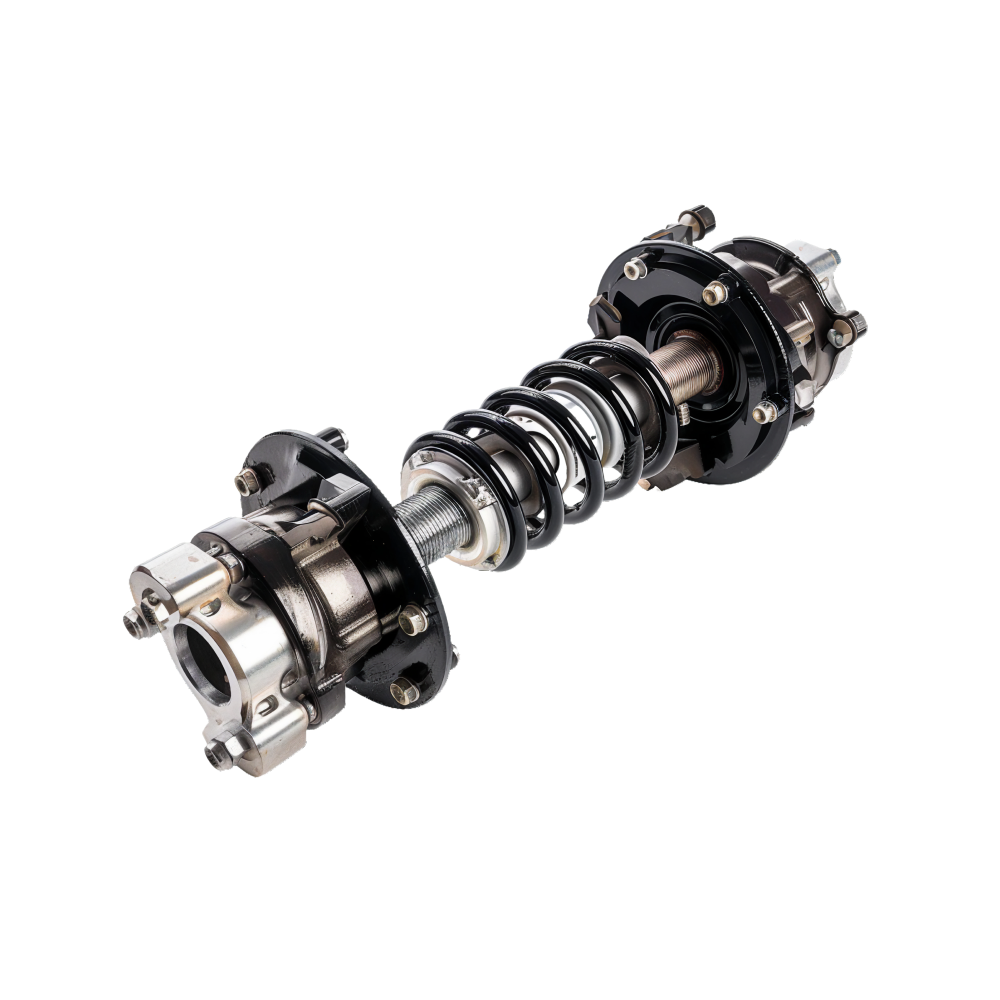Quran Holland checks the equipment in the back of an Aclima car.
Quran Holland is used to people making funny faces or waving at him as he drives around Los Angeles. Sometimes, they even strike a pose.
But the apparatus affixed to the top of the white Kia Niro he navigates through the streets isn’t snapping photos or sensing people’s movements like a Waymo or a Google Street View car. The white cylindrical gadget on Holland’s car measures wind.
“I’m not going to crush their dream, but unfortunately, it’s not a camera,” Holland says with a laugh.
Advertisement
Article continues below this ad
The wind meter is one of two sensor locations on an Aclima car, both of which feed air quality data back to researchers in a lab operated by UC Berkeley, UC Riverside or private research company Aerodyne. The second is a small black object with a circular opening on the passenger side window that would probably go unnoticed, were it not for the decals declaring “I measure air quality” beside the company logo. The intakes measure air quality every second, looking for 10 pollutants in a manner that differs significantly from how California cities have typically measured air quality.
Instead of measuring air quality at a fixed location, like air quality website PurpleAir, Aclima’s mobile units measure pollutants as the car moves, picking up differences on a block-by-block level. In one of the company’s earliest studies, in which it mounted its sensors to Google Street View cars, it found that even in a 12 square mile radius of Oakland, air pollution could vary dramatically — up to five to eight times per block.
An Aclima car at the SMMI launch event in Sacramento.
Now, the Aclima cars are roaming around 64 locations in California as part of a new effort, dubbed the Statewide Mobile Monitoring Initiative, or SMMI, which launched in June. These communities were identified as pollution-burdened areas and will have air quality measured 24/7 for about 10 months. At the end of the measuring period, each location will receive an annual pollutant average, and all the data will be available on an interactive map one day, accessible to the public. The goal is that community organizations and regulators can use that data to inform policy decisions.
Advertisement
Article continues below this ad
Holland starts his day in a mostly vacant Motel 6 parking lot. He opens the trunk of the plug-in hybrid hatchback, which is filled with four boxy machines. He flicks the switches on each of them and a low hum begins. Tubes line one side of the vehicle’s ceiling, stretching to the black sensor mounted on the rear window. The lights on the boxes turn red, then green. The process takes about five minutes, while Holland scans the tubing for dust or any other obstructions. After a status check, he searches his tablet for the day’s route and attaches it to a dashboard arm, puts on some music, and sets the car into drive.
In the Bay Area, you may spot the cars in West Berkeley, SoMa or on Treasure Island. In LA, one may drive by in Inglewood or Koreatown. Each car is named after a famous musician — Holland drove “Buddy” (named for Buddy Guy) the day we rode along, and J. Lo sat parked nearby.
Quran Holland stands in front of an Aclima car.
An Aclima car.
A close-up of the air monitoring sensor on an Aclima car.
The cars will eventually cover 950,000 miles in California and reach 5.2 million residents. California cities have the worst air quality in the country, according to the American Lung Association’s most recent “State of the Air” report, by all three categories measured — ozone (also known as smog), year-round particle pollution and short-term particle pollution (which includes dust, soot and smoke). The fine particle pollution can make its way into your lungs and your bloodstream, which can cause a host of health issues such as asthma, heart attack or stroke.
Advertisement
Article continues below this ad
History | Why a wealthy banker blasted a huge hole in a Bay Area cliff
Local | There's a mansion hidden directly under the Bay Bridge
Culture | Inside the Bay Area’s cult-like obsession with Beanie Babies
Local | The world's last lost tourist thought Maine was San Francisco
Get SFGATE's top stories sent to your inbox by signing up for The Daily newsletter here.
As the machines hummed softly in the background, Holland told me about a friend who died young of lung cancer, and wasn’t a smoker. Ever since, air quality is something that Holland has become passionate about. SMMI has created about 100 jobs around the state, funded with $27 million by California Climate Investments, a statewide program using the state’s cap-and-trade funds. Before Aclima, Holland was working at a school helping troubled youth, and while he said it was incredibly rewarding, he was burnt out and needed a change. He said the job with Aclima, which pays $25 an hour in Los Angeles, has been a nice break between that and joining the police force, which he plans to do when the project is completed. He likes that it’s still a mission-driven job that will eventually help people in his community.
The inside of an Aclima car.
Low-income communities and those with a high concentration of people of color are most often heavily affected by this pollution, due to proximity to high-emitting locations like warehouses, ports and highways. The SMMI, managed by the California Air Resources Board, was rolled out in partnership with 40 local organizations working to improve the air in their communities.
Advertisement
Article continues below this ad
Miguel Alatorre, co-founder of Unidos Network in Kettleman City, a nonprofit organization focused on empowering underserved rural communities, has long been an environmental justice advocate searching for solutions to his city’s notoriously polluted air. Kettleman City’s air quality suffers from its proximity to a large hazardous waste facility, the area’s agricultural pesticide use and heavy truck traffic that passes nearby. Alatorre said he knew the community needed more easily digestible data on the burdens on his community to better advocate for solutions to those problems.
An Aclima car at the SMMI launch event in Sacramento.
“I think this is a really positive first step, the fact that we are collecting data and making sure that we do it by including community members,” he told SFGATE.
Awareness of the importance of good air quality has grown in recent years, especially since wildfires repeatedly ravage the state, said Aclima’s CEO Davida Herzl. She hopes the new hyperlocal, publicly available information will help everyone, from organizations to individuals, make informed decisions. “There’s an assumption that, oh, if you live in San Francisco, of course you breathe the same air,” Herzl said. “No, you don’t.”
Advertisement
Article continues below this ad
“I think it’s very important because we all are what we breathe,” Herzl said, “… because this is our environment. We have to take it more seriously, and we have not to date.”
— Small Calif. city had dreams of being a tourist hub. 38 years later, it's happening.
— America's obsession with California failing
— What it's like to live in a Calif. tourist attraction being swallowed by the sea
— It was supposed to be a California utopia. It turned into a ghost town.
— Wolf hybrids are illegal everywhere in Calif. except here
— Are some of California's most beloved attractions doomed?
Tessa McLean is the California editor for SFGATE. She joined the team in 2019, spending four years helming the local section. She now writes features with a statewide lens, telling stories about the issues, trends and news that matter in the Golden State. To submit tips, comments or messages about why you love California, please reach out to her at tessa.mclean@sfgate.com.
About
Contact
Services
Quick Links

